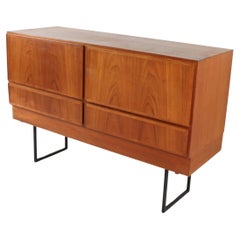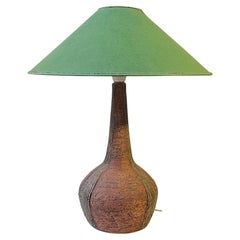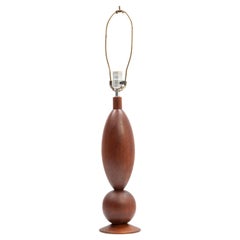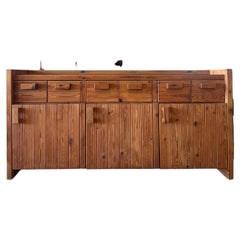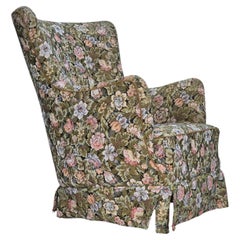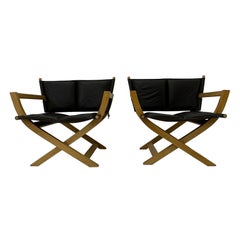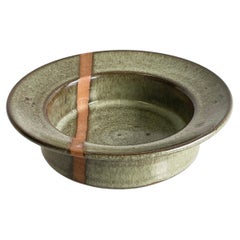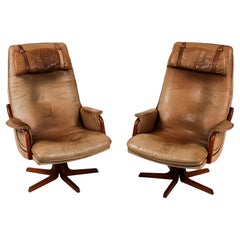1970s Danish Furniture
Vintage 1970s Danish Cabinets
Iron
Vintage 1970s Danish Scandinavian Modern Table Lamps
Stoneware, Textile
Vintage 1970s Danish Mid-Century Modern Table Lamps
Teak
Vintage 1970s Danish Mid-Century Modern Sideboards
Pine
Vintage 1960s Danish Scandinavian Modern Armchairs
Fabric, Jacquard, Beech
Vintage 1970s Lounge Chairs
Leather, Wood
Vintage 1970s Danish Brutalist Chandeliers and Pendants
Synthetic, Rope, Plastic
Vintage 1970s Danish Scandinavian Modern Ceramics
Ceramic
Vintage 1970s Danish Mid-Century Modern Lounge Chairs
Leather, Teak
Vintage 1970s Danish Scandinavian Modern Armchairs
Velvet, Beech
Vintage 1970s Danish Scandinavian Modern Armchairs
Velvet, Beech
Vintage 1970s Danish Scandinavian Modern Armchairs
Velvet, Beech
Vintage 1970s Danish Scandinavian Modern Lounge Chairs
Wool, Teak
Vintage 1970s Danish Modern Flush Mount
Metal
Vintage 1970s Danish Scandinavian Modern Armchairs
Velvet, Teak
Vintage 1970s Danish Post-Modern Dining Room Tables
Wood, Stoneware
Vintage 1970s Danish Scandinavian Modern Armchairs
Wool, Teak
Vintage 1960s Danish Scandinavian Modern Armchairs
Velvet, Ash
Vintage 1970s Danish Scandinavian Modern Armchairs
Velvet, Beech
Vintage 1970s Danish Mid-Century Modern Carts and Bar Carts
Pottery, Oak
Vintage 1970s Danish Scandinavian Modern Armchairs
Velvet, Beech
Vintage 1970s Danish Scandinavian Modern Sofas
Wool, Oak
Vintage 1960s Danish Scandinavian Modern Armchairs
Fabric, Velvet, Beech
Vintage 1970s Danish Scandinavian Modern Armchairs
Velvet, Beech
Vintage 1970s Danish Scandinavian Modern Club Chairs
Velvet, Beech
Vintage 1970s Danish Scandinavian Modern Armchairs
Velvet, Ash
Vintage 1970s Danish Scandinavian Modern Swivel Chairs
Steel
Vintage 1970s Danish Scandinavian Modern Armchairs
Velvet, Beech
Vintage 1970s Danish Mid-Century Modern Dining Room Tables
Teak
Vintage 1970s Danish Mid-Century Modern Side Chairs
Rattan, Pine
Mid-20th Century Danish Scandinavian Modern Vases
Ceramic
Vintage 1970s Danish Scandinavian Modern Sofas
Fabric, Beech
Vintage 1970s Danish Scandinavian Modern Armchairs
Wool, Oak, Teak
Vintage 1970s Danish Scandinavian Modern Armchairs
Velvet, Beech
Vintage 1970s Danish Scandinavian Modern Armchairs
Velvet, Teak
Vintage 1970s Danish Scandinavian Modern Armchairs
Velvet, Ash
Vintage 1970s Danish Scandinavian Modern Armchairs
Velvet, Ash
Vintage 1970s Danish Scandinavian Modern Armchairs
Wool, Oak
Vintage 1970s Danish Scandinavian Modern Sofas
Wool, Beech, Bentwood
Vintage 1970s Danish Scandinavian Modern Armchairs
Velvet, Beech
Vintage 1960s Danish Scandinavian Modern Armchairs
Wool, Oak
Vintage 1970s Danish Scandinavian Modern Armchairs
Velvet, Beech
Vintage 1970s Danish Scandinavian Modern Armchairs
Wool, Oak
Vintage 1970s Danish Scandinavian Modern Armchairs
Leather, Oak
Vintage 1970s Danish Scandinavian Modern Sofas
Velvet, Beech
Vintage 1960s Danish Scandinavian Modern Sofas
Fabric, Velvet, Ash
Vintage 1960s Danish Scandinavian Modern Armchairs
Velvet, Beech
Vintage 1970s Danish Scandinavian Modern Wingback Chairs
Wool, Oak
Vintage 1960s Danish Scandinavian Modern Armchairs
Velvet, Beech
Vintage 1960s Danish Scandinavian Modern Armchairs
Fabric, Teak
Mid-20th Century Danish Scandinavian Modern Vases
Ceramic
Vintage 1960s Danish Scandinavian Modern Armchairs
Velvet, Beech
Mid-20th Century Danish Brutalist Sofas
Oak
Vintage 1970s Danish Scandinavian Modern Armchairs
Velvet, Ash
Vintage 1970s Danish Scandinavian Modern End Tables
Teak
Vintage 1970s Danish Scandinavian Modern Lounge Chairs
Leather, Canvas, Beech, Bentwood
Vintage 1970s Danish Scandinavian Modern Side Tables
Beech
Vintage 1970s Danish Modern Flush Mount
Metal
- 1
- ...
1970s Danish Furniture For Sale on 1stDibs
How Much is a 1970s Danish Furniture?
- What is 1970s furniture called?1 Answer1stDibs ExpertMarch 15, 2024What 1970s furniture is called varies. Generally, you may see pieces produced during the decade classified as "vintage" or "retro" furniture. During the 1970s, some makers continued to produce furniture that boasted the characteristics of mid-century modern works. The disco era yielded furnishings with organic, often rounded shapes, unadorned silhouettes, clean lines and a mix of materials. The showy leather furniture of the 1970s, which was both sexy and comfortable, is seeing a resurgence in today’s homes. Shop a wide variety of vintage 1970s furniture on 1stDibs.
- What was worn in the 1970s?1 Answer1stDibs ExpertFebruary 22, 2021Fashion during the 1970s included lots of T-shirts, cardigans, kimonos, graphic tees, jeans, khakis, and vintage clothes. In the mid-1970s, other fashion highlights included puffy skirts and shirts with flowy sleeves.
- 1stDibs ExpertMarch 3, 2023To tell if furniture is Danish, locate the stamp or label with the maker's name. Refer to trusted online resources to find out if the manufacturer or artisan's workshops are in Denmark. If you have difficulty locating the name of the maker, consult a certified appraiser or experienced antiques dealer for assistance identifying the piece. On 1stDibs, shop a collection of Danish furniture.
- Why is Danish furniture so good?1 Answer1stDibs ExpertJune 15, 2023Vintage Danish furniture is so good because its design was founded on centuries-old beliefs in both quality craftsmanship and the ideal that beauty should enhance even the humblest accessories of daily life. Mid-century Danish furniture took off in the United States after the Second World War, when Scandinavia’s simple, curvilinear wooden furniture, home goods and textiles suddenly seemed the perfect foil for glass-and-steel skyscrapers. The Danes excelled at chairs. Hans Wegner and Arne Jacobsen were exemplars of the country’s facility with wood, particularly teak. Wegner created such iconic pieces as the Round chair and the Wishbone chair. Find vintage and antique Danish furniture on 1stDibs.
- What is Danish modern furniture?1 Answer1stDibs ExpertFebruary 13, 2024Danish modern furniture is the term for a style of furniture that emerged during the 1930s through the innovation of designers from Denmark. It is a subset of Scandinavian modern furniture, the warmest and most organic iteration of modernist design. The work of the designers associated with vintage Scandinavian modern furniture was founded on centuries-old beliefs in both quality craftsmanship and the ideal that beauty should enhance even the humblest accessories of daily life. Some notable Danish modern designers include Hans J. Wegner, Kaare Klint, Arne Jacobsen, Finn Juhl, Arne Vodder and Verner Panton. Shop a range of Danish modern furniture on 1stDibs.
- 1stDibs ExpertNovember 4, 2024To identify Danish furniture, search inconspicuous areas of your piece for a maker's mark. Upon locating one, use trusted online resources to learn about the maker and determine if your piece originated from Denmark or a Danish designer. Some well-known Danish makers include Hans Wegner, Arne Jacobsen, Kaare Klimt, Børge Mogensen, Finn Juhl, HAY, Poul Kjærholm, Vernon Panton and Fritz Hansen. Shop a large selection of Danish furniture on 1stDibs.
- 1stDibs ExpertApril 5, 2022Yes, sequins were indeed popular in the 1970s and could be seen on the dancefloors and discos of the time, along with other popular fabrics like velvet and satin. Sequins and hot pants were the go-to outfit of the disco-glam decade. Shop iconic vintage and contemporary sequin clothing from some of the world’s top boutiques on 1stDibs.
- Was velvet used in the 1970s?1 Answer1stDibs ExpertJune 15, 2023Yes, velvet was used in the 1970s. Fashion designers used the fabric to produce dresses, bell bottoms, flowy kimonos and other pieces. Furniture makers often used it as the upholstery on sofas and armchairs. On 1stDibs, shop a variety of pieces from the 1970s.
- Are the 1970s mid-century?1 Answer1stDibs ExpertFebruary 17, 2023No, the 1970s are generally not considered to fall within the era identified as mid-century. With respect to mid-century modern design, while there is some debate between collectors and design experts about the specific time period that saw the emergence of the style, most furniture enthusiasts agree that by the late 1960s, interest in MCM had largely declined. Writer Cara Greenberg, who coined the term “mid-century modernism,” suggests that “the period from the end of World War II to 1960 – from V-J Day to JFK – was the heyday of innovative furniture design in America.” Mid-century modern furniture is characterized by clean lines and inviting, organic shapes. Furniture makers of the era believed that good design was an essential part of good living. Find a variety of vintage mid-century modern furniture and decorative objects on 1stDibs.
- 1stDibs ExpertApril 5, 2022To tell if a dress is from the 1960s or 1970s, first look for a label. You may be able to determine the approximate date of the dress simply by researching the designer using reputable online sources. Also, check the zippers. Dresses from the 1960s will usually have metal or nylon zippers. Ones from the 1970s are more likely to be plastic. You'll find a large selection of vintage dresses on 1stDibs.
- 1stDibs ExpertSeptember 25, 2019
Danish and Swedish design share many tenets, including an emphasis on simplicity and functionality. Danish furniture generally expresses these ideas through new industrial technologies, while Swedish products are minimalist and stress clean lines.
- 1stDibs ExpertNovember 26, 2024To identify Danish teak furniture, look for stamps, labels and tags that bear a maker's mark. You can consult trusted online resources to determine who produced your piece and whether it is a Danish maker. From there, research the company, workshop or artisan to find out if it produced pieces out of teak wood and search online catalogues to see if you can find your item and learn more about its materials. Knowing the characteristics of teak wood can also be helpful. It often has a smooth, straight grain and tends to be dense. Colors vary, but fine-quality pieces often have a golden-brown hue. When in doubt about your furniture, have a certified appraiser or experienced antique dealer assist you. Shop a selection of Danish teak furniture on 1stDibs.
- 1stDibs ExpertApril 5, 2022Go-go boots were fashionable in the late 1960s through the 1970s. A calf-length to knee-length boot became synonymous with 1960s and 1970s fashion and is still highly coveted today by fashion enthusiasts. Shop a wide range of vintage go-go boots on 1stDibs.
- 1stDibs ExpertNovember 4, 2024To identify 1800s furniture, first check to see if your piece bears any maker's marks. Should you locate any, researching them using trusted online resources can help you determine the maker and age of your furniture. To determine if unmarked pieces date back to the 19th century, look for tool marks and variations in their carvings and ornamentation. Since 19th-century furniture was handmade, you should expect to find these signs of hand craftsmanship. A piece that shows no marks or inconsistencies in details is likely a contemporary machine-made reproduction. Familiarizing yourself with the characteristics of Rococo, Chippendale, Gothic Revival, neoclassical and other 19th-century styles can also be helpful. If you struggle to make an identification, consider consulting a certified appraiser or knowledgeable antique dealer. On 1stDibs, find a range of 19th-century furniture.
- What is 1920s furniture called?1 Answer1stDibs ExpertNovember 13, 2024What 1920s furniture is called depends on its style. However, the most prominent design style of the decade was Art Deco. The term alone conjures visions of the Roaring Twenties, Machine Age metropolises, vast ocean liners, sleek typography and Prohibition-era hedonism. The iconic movement made an indelible mark on all fields of design throughout the 1920s and ’30s, celebrating society’s growing industrialization with refined elegance and stunning craftsmanship. Art Deco furniture often featured bold geometric lines, floral forms, shimmering mirrored finishes, sleek metal accents, and the use of expensive materials such as shagreen or marble as well as exotic woods such as mahogany, ebony and zebra wood. On 1stDibs, find a diverse assortment of Art Deco furniture.
- What is ’70s furniture called?1 Answer1stDibs ExpertSeptember 23, 2024What ’70s furniture is called depends on its style. Generally, pieces from this decade can be called vintage furniture. However, pieces with certain stylistic characteristics have other names. For example, some 1970s furniture is mid-century modern. The style, which emerged primarily in the years following World War II, was developed in an energetic, optimistic spirit by creators who believed that good design was an essential part of good living. On 1stDibs, shop a variety of 1970s furniture.
- What is 1950s furniture called?1 Answer1stDibs ExpertSeptember 23, 20241950s furniture is called vintage furniture. Some pieces produced during this period may be considered mid-century modern based on their characteristics. Mid-century modern design refers to the variety of modernism that rose to prominence in the 1940s and ’50s. It displays many of the characteristics of the earlier versions of modernism, including simple forms and a focus on functionality. Other traits common in mid-century modern furniture include unadorned silhouettes, clean lines and mixed materials, emphasizing wood, wool, steel and plastic. On 1stDibs, explore a large collection of 1950s furniture.
- 1stDibs ExpertFebruary 13, 2023Furniture from the 1960s is often called mid-century modern. This style emphasizes the importance of good design that looks attractive and performs its function well. Notable mid-century modern designers include Eero Saarinen, George Nelson, Florence Knoll and Charles and Ray Eames. On 1stDibs, shop a selection of mid-century modern furniture.
- 1stDibs ExpertNovember 26, 2024To identify 1930s furniture, first see if you can spot a maker's mark in hidden areas, such as the back, base, inside of drawers or under tabletops and seats. Trusted online resources can help you determine who produced your furniture based on these markings, and from there, you can research more to get a rough idea of how old your item is. A piece's characteristics can also be helpful when dating furniture. Many items made during the 1930s are examples of Art Deco furniture. Art Deco furniture is characterized by geometric patterns and luxurious materials, such as shagreen, marble, mother of pearl, mirrored glass, exotic animal hides and rare woods like mahogany, ebony and zebra wood. A certified appraiser or experienced antique dealer can provide an expert opinion on when your piece was likely made. On 1stDibs, explore a range of 1930s furniture.
- 1stDibs ExpertMay 5, 2023Which clothing style was most popular in the discos in the 1970s is open to debate. Some of the trends of the discotheque scene included sleeveless, sequined tops paired with bell bottoms and knee-length halter dresses topped off with tall go-go boots. For men, jumpsuits and leisure suits were the favorite looks. Both men and women often wore shoes with chunky heels and thick platforms. On 1stDibs, find an assortment of 1970s vintage clothing and accessories.
